Framing Interiority: Medical Imaging in VAICA’s Fields of Vision
The second week of VAICA’s festival Fields of Vision was oriented around “Orbits of Desire.” Here, the video works foregrounded the body as they explored “…subjects of gender, relationships and performances circumscribed by bodily acts,” according to the curatorial note. An interesting strand that emerged through these—which flowed from the first week into the second—was that of medical imaging. The past two years of the pandemic have resulted in an obsession with the body as a (potential) site of disease and as a medical object. In the following post, I will explore the ways in which three works featured in the first two weeks of the festival deploy medical imaging as a part of their form to evolve a vocabulary around the body and discourses of crises and control.
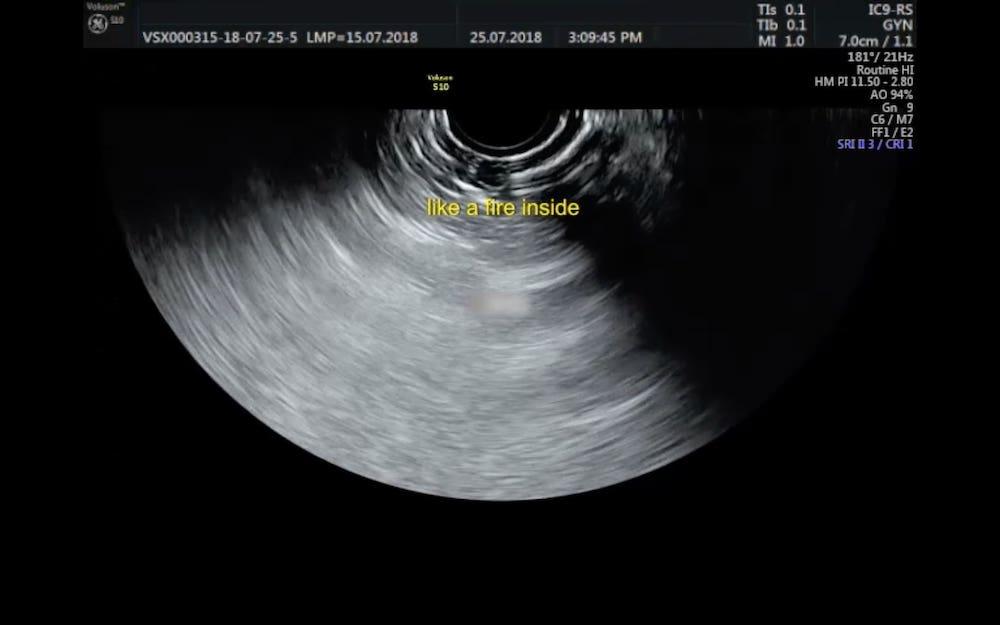
Still from Failure of an Unplanned by Khushbu Patel. (2019. Image courtesy of the artist and VAICA.)
In Failure of an Unplanned (2019), Khushbu Patel employs the medical imaging of a Transvaginal Ultrasound Scan of a human foetus. Included as part of the “Orbits of Desire,” this two-minute-long work is silent and uses text and wordplay to communicate the crisis of decision-making. We imagine the individual’s thought process as the yellow text placed on the moving image transforms from “Indeterminate” to “Determinate” to “Terminate.” The use of Ultrasound imaging specifically leads to a reflection on the disciplining of bodies through such an apparatus, and the attendant socio-political complexities of control over women’s bodies. As we continue peering at the image to make sense of it, it moves into abstraction—defying attempts to read it into existence. Influenced by Julia Kristeva’s notion of “abjection” as a state of being that emerges with a breaking down of distinctions between the self and other as well as that of identity, system and order; the form of Patel’s work can be read as an attempt to a move towards “…a recasting of syntax and vocabulary—the violence of poetry and silence.”
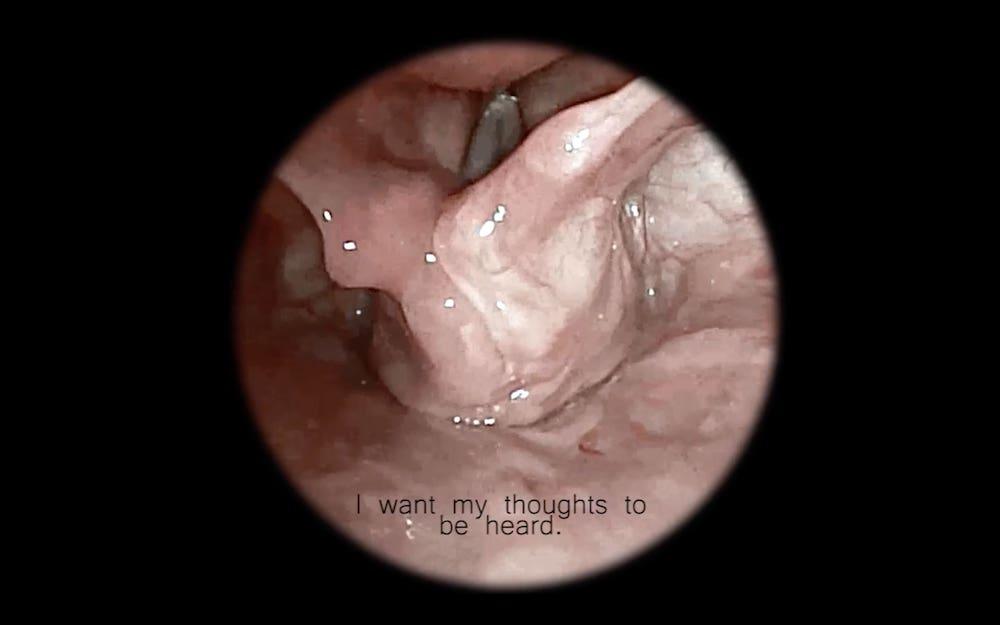
Still from Still Small Voice by Kunatharaju Mrudula. (2021. Image courtesy of the artist and VAICA.)
Also featured as part of “Orbits of Desire,” Kunatharaju Mrudula’s work Still Small Voice (2021) frames her vocal chords as she speaks of suffocation and self-censorship. With the medical imaging camera placed inside her throat, we see her voice box open and close as she talks about not being able to make her voice heard. There is no escape in such a tightly framed shot and one is conscious of the invasiveness of such a procedure. The resulting corporeal images of the minute-long work are charged with potency. The title of the piece also brings to mind the idea of an individual’s conscience. The insides of the body are brought out, becoming the site for a raw form of expression and confrontation. The performance of the words is inscribed on the body as the content and form of the video merge viscerally, ultimately “…glad to have a voice.”
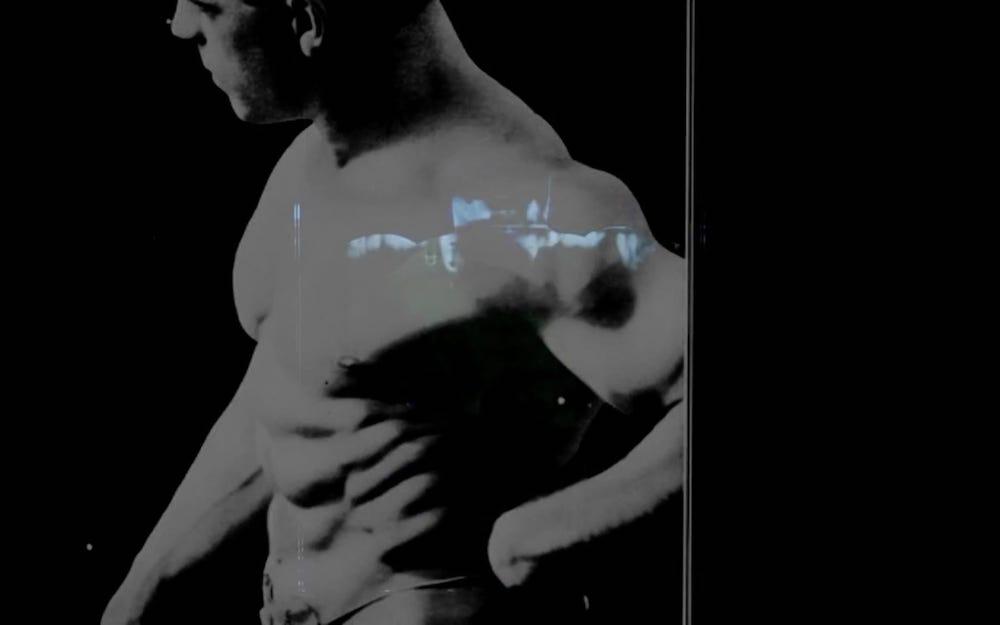
Still from Isolation of Pectoralis Major by Sukanya Ghosh. (2010–12. Image courtesy of the artist and VAICA.)
Another video work that deployed medical imaging was Sukanya Ghosh’s Isolation of Pectoralis Major (2010–12). Screened in the first week of the festival as part of “Cartographies of Sensation,” Ghosh’s work juxtaposes images of bodybuilders from German gymnast Maxick’s manual Muscle Control with medical imaging of her father’s ailing body. Over the course of the video, the early figures of Maxick’s bodybuilders merge into the medical imaging of her father’s X-rays as we imagine the slow fading of an idealised male physique. In the atrophying muscles and limbs accompanied by the sound of laboured breathing, we see entropy at work as it acts not just through the time of the body, but in the time of the video as it all finally fades to black. Here, regimens of control must be relinquished to time and death as the work also references a poem by E.E. Cummings, excerpting the lines “I step into the not merely immeasurable, into the mightily alive, the dear beautiful (eternal) night.”
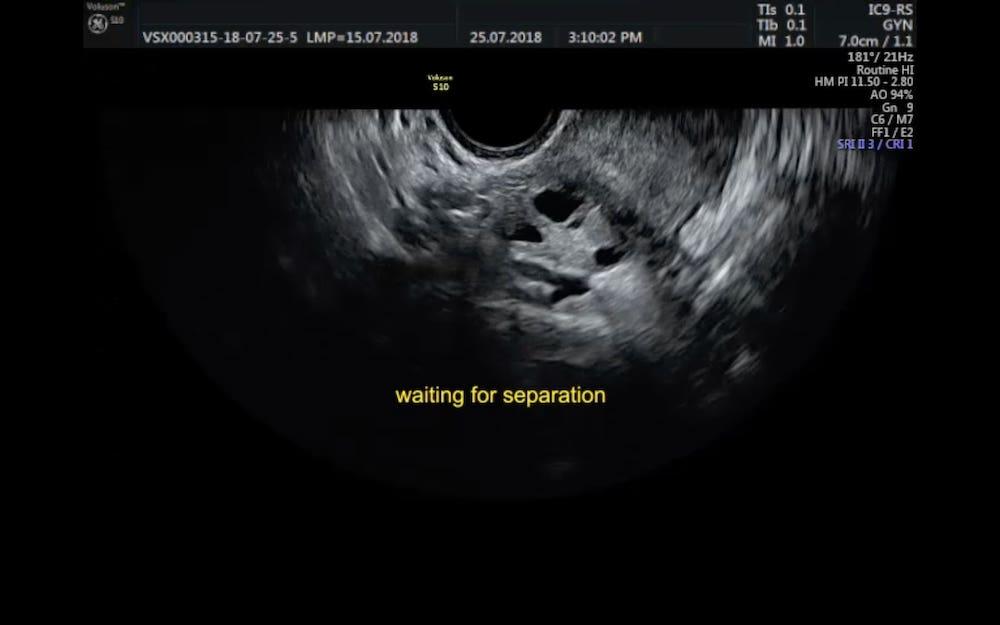
Still from Failure of an Unplanned by Khushbu Patel. (2019. Image courtesy of the artist and VAICA.)
In all three works, the interior of the body—as something that is not otherwise visibilised or spoken about publicly—is foregrounded, linked to times of crisis. Here, moving inwards through the site of the body also allows for access inside the mind—enabling the excavation of those feelings and thoughts that are hidden, unconscious or remain repressed. The works also reference questions of agency, especially linked to an individual’s choice and control over their own bodies.
The use of medical imaging by these artists thus also becomes a way to question the very construction of gender as idealised conceptions of roles and bodies. Critic Lisa Cartwright in Screening the Body: Tracing Medicine’s Visual Culture conceptually maps the use of moving images in medical sciences to understand the ways in which the body has been represented culturally. Written in 1995, her book examines the development of a surveillant gaze through the apparatus of such imaging practices—as they determine what is visibilised, what is chosen to be marginalised and by whom. She concludes by arguing, “…women must actively reconfigure technologies of representation… This field is in need of active feminist technological refunctioning and counter-surveillance.” In such a vein, perhaps we can read the works of Patel, Kunatharaju and Ghosh as a site of reclamation, as their work moves medical imaging into different contexts to generate questions around representations of the body.
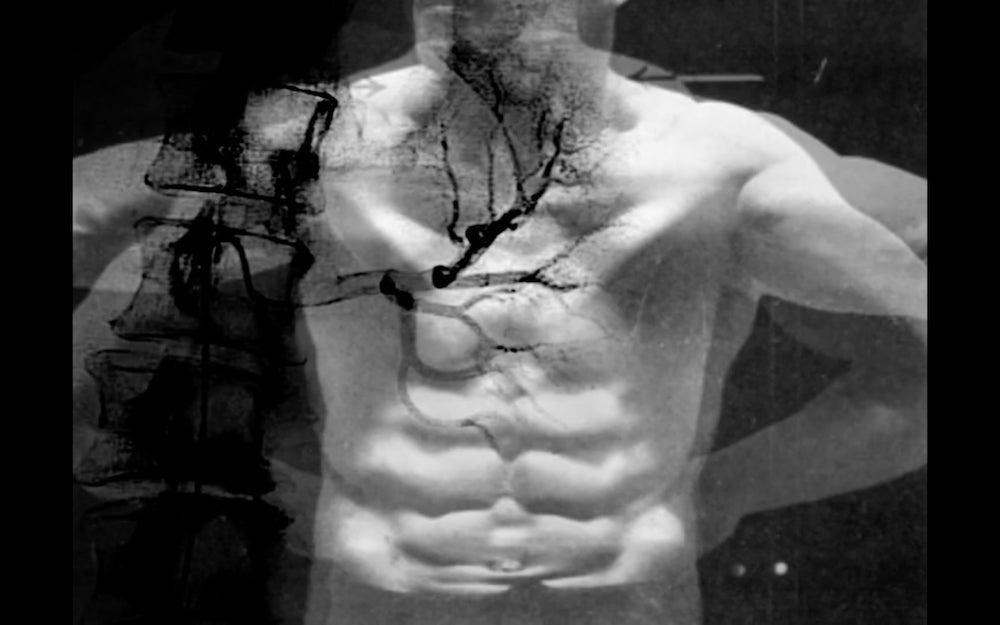
Still from Isolation of Pectoralis Major by Sukanya Ghosh. (2010–12. Image courtesy of the artist and VAICA.)
To read more about the works featured as part of VAICA's Fields of Vision, please click here, here, here, here and here.




